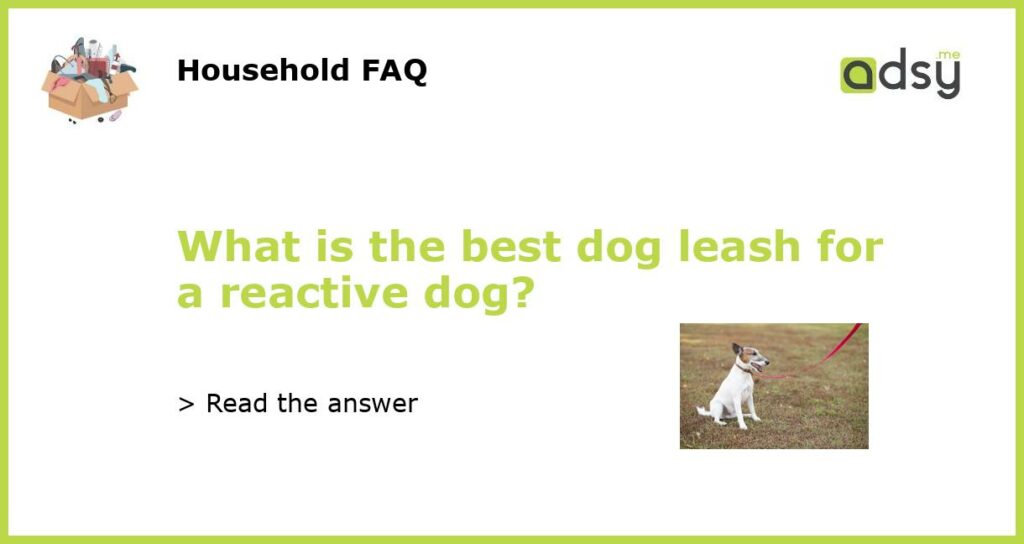Understanding the Needs of a Reactive Dog
Reactive dogs can be challenging to handle, especially when going for walks. Reactivity in dogs refers to an extreme, often fearful, reaction to certain stimuli, such as other dogs, people, or even loud noises. These reactions can range from barking and lunging to more aggressive behaviors, which can be dangerous for both the dog and the person handling them. One of the most effective tools in managing a reactive dog is a good quality dog leash.
The Importance of a Secure and Comfortable Leash
When choosing a leash for a reactive dog, there are several factors to consider. Firstly, the leash should be secure, ensuring that the dog cannot escape or break free during a reactive episode. It should also be comfortable for both the dog and the handler, as comfort can play a significant role in reducing stress and anxiety in a reactive dog.
Considerations When Choosing the Best Leash
There are several considerations to keep in mind when looking for the best leash for a reactive dog:
- Length: A shorter leash is often recommended for reactive dogs, as it provides more control and prevents the dog from getting too far away from the handler. A leash length of around 4-6 feet is usually ideal.
- Material: The leash should be made of a durable material that can withstand the pulling and tugging of a reactive dog. Nylon and leather are popular choices.
- Handle: Look for a leash with a comfortable handle that provides a firm grip. Some leashes also come with padded handles for added comfort.
- Hardware: The leash should have sturdy hardware, such as a strong metal clip, that can withstand the pulling force of a reactive dog.
- Visibility: Consider choosing a leash in a bright color or with reflective properties to ensure good visibility, especially during walks at night.
Recommended Dog Leash Options
There are several dog leash options that are suitable for reactive dogs:
- Front-Clip Harness Leash: A front-clip harness leash attaches to the front of the dog’s chest, allowing more control and discouraging pulling. This type of leash is especially useful for reactive dogs as it redirects their attention towards the handler.
- Slip Lead: A slip lead is a leash and collar combination that creates a loop around the dog’s neck, tightening when the dog pulls. It is important to use a slip lead correctly to avoid causing discomfort or injury to the dog. This type of leash can provide greater control for reactive dogs.
- Bungee Leash: A bungee leash has a built-in elastic section that absorbs the shock of a dog’s sudden movements, reducing the impact on the handler’s arm. This type of leash can be particularly helpful for reactive dogs with a tendency to lunge or pull.
- Retractable Leash: While not recommended for all reactive dogs, a retractable leash can be useful in certain situations. It allows the dog more freedom to move while still providing control when needed. However, it is essential to use a retractable leash responsibly and ensure that the dog does not become entangled or get too far away from the handler.
- Customized Leash: For some reactive dogs, a customized leash may be the best option. Working with a professional dog trainer or behaviorist can help design and create a leash that meets the specific needs of the dog and handler.
Conclusion: Finding the Right Leash for Your Reactive Dog
Choosing the best dog leash for a reactive dog requires careful consideration of the dog’s specific needs. Assessing factors such as length, material, handle, hardware, and visibility can help narrow down the options. It is also important to consult with a professional dog trainer or behaviorist for personalized recommendations. Ultimately, finding a leash that provides security, comfort, and control is key to ensuring the safety and well-being of both the reactive dog and the handler.






